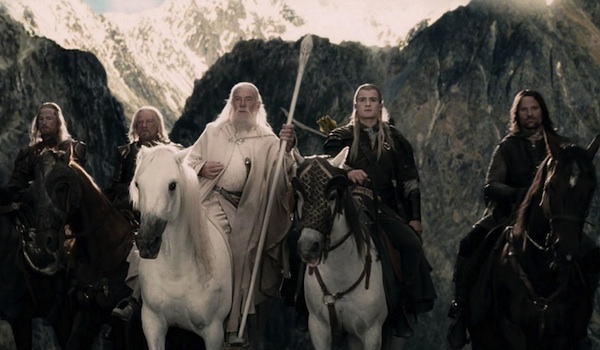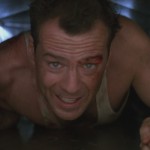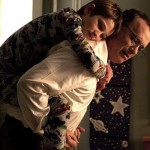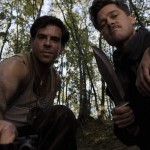The Lord of the Rings: The Two Towers Review
Often, the second in a trilogy is the strongest of the bunch. Look at “The Empire Strikes Back†or “Spider-Man 2.†Other times, they are the worst in the series. For proof of this, look at the other Star Wars trilogy and its subpar entry, “Attack of the Clones.†The “Lord of the Rings†series doesn’t feature any truly weak movies. As I’ve said before, I believe this series to be one 10-hour epic that was broken into parts for distribution. But when looking at them individually, “The Two Towers,†the second film in the series, is probably the weakest if only because it’s more of a bridge than a complete story. Still, I don’t believe it subtracts anything from the overall product and I still maintain this is one incredible film.
When we last left our fellowship, Frodo (Elijah Wood) and Sam (Sean Astin) had embarked on their own journey, trying to get the One Ring to Mordor. The other hobbits, Merry (Dominic Monaghan) and Pippin (Billy Boyd), had been captured by a pack of savage Uruk-Hai, and Aragorn (Viggo Mortensen), Legolas (Orlando Bloom), and Gimli (Jonathan Rhys-Davies).
The other two members of the fellowship had fallen. Boromir (Sean Bean) was killed protecting Merry and Pippin, while Gandalf the Grey (Ian McKellen) had fallen in the Mines of Moria. But as the film opens, we learn Gandalf did not fall helplessly to his death. Rather, he slayed the Balrog, a monstrous creature of fire who dwelled within the Mines. Although Gandalf too passed after the battle, he returned to Middle Earth, more powerful than ever as Gandalf the White.
We meet several new characters in “The Two Towers,†the most important of which is Gollum (Andy Serkis), who possessed the Ring before Frodo’s uncle, Bilbo. Gollum is also possessed by the Ring. He calls it his “precious,†and when he first comes across Frodo and Sam, he attempts to kill them and take back the Ring. The two hobbits subdue him, but decide to take him with them because they do not know the way to Mordor.
We also meet King Theoden (Bernard Hill) of Rohan. He mind is being poisoned by one of Saruman’s spies, but Gandalf and the rest of the fellowship need him as an ally. Rohan is being destroyed, and with war on his doorstep, Gandalf recognizes he needs a clear mind to make a sound decision.
There are multiple other characters and subplots (none of which make the film confusing or unfocused), but for the purpose of relative brevity, I’ll leave out Eomer, Faramir, Eowyn, and the Ents. All are interested characters/creatures, but they don’t add much to the overall narrative arc. They don’t detract from the film, but I won’t be spending any more time on them in this review.
The film covers a lot of ground. The bridge between the first and third films is long, but “The Two Towers†effectively connects the two. Therein, however, lays its ultimate problem. It’s incomplete. Still, this is a minor problem because the film is a rousing adventure, and when viewed as part of a 10-hour epic, it contains some of the strongest material overall.
Easily the best extended scene in this film, and arguably the best extended scene of the trilogy, is the Battle of Helm’s Deep. It features tens of thousands of Uruk-Hai troops against a much smaller army of Rohan. The CGI is incredibly effective and never overdone. The sheer scope of the battle is staggering, with a number of different weapons and creatures and settings. It’s a spectacle to rival any in cinematic history and it manages to impress throughout the entirety of the film’s final 45 or so minutes.
The acting once again is very good. The standouts are Viggo Mortensen and Ian McKellen as the true leaders of the fellowship. It’s fascinating to watch Aragorn’s transformation over the three films from a journeyman afraid of this destiny to absolute leader who never wavers on an action or decision. In the first film, he doubts himself. By the end, and including this film, no one doubts him. Ian McKellen also proves to be one of cinema’s most revered heroes. As old as he is, there’s nothing he isn’t capable of.
Another standout out is Andy Serkis as Gollum. The entire part is motion-capture, but he uses everything he can (his movements and voice work) to make Gollum a truly three-dimensional character. We never know where his allegiance lies, and I don’t think even he knows where his allegiance lies most of the time. He’s just a really interesting character, and Serkis gives us a really interesting performance.
When looking at these films separately, I think “The Two Towers†is the weakest, but that’s not saying much. This is not a trilogy along the lines of “The Matrix†films or the “Star Wars†series. Each film adds to the others, and they ought not to be judged separately. Yet that’s exactly what I’m doing, and because it is the most incomplete of the three, I think it has problems standing up on its own accord. Still, the entire achievement is incredible, and as I said in my Fellowship of the Ring review, if you have ten hours to kill, you should pop in all three of these and experience something unique, awe-inspiring, and wonderful.
















One Response to The Lord of the Rings: The Two Towers Review